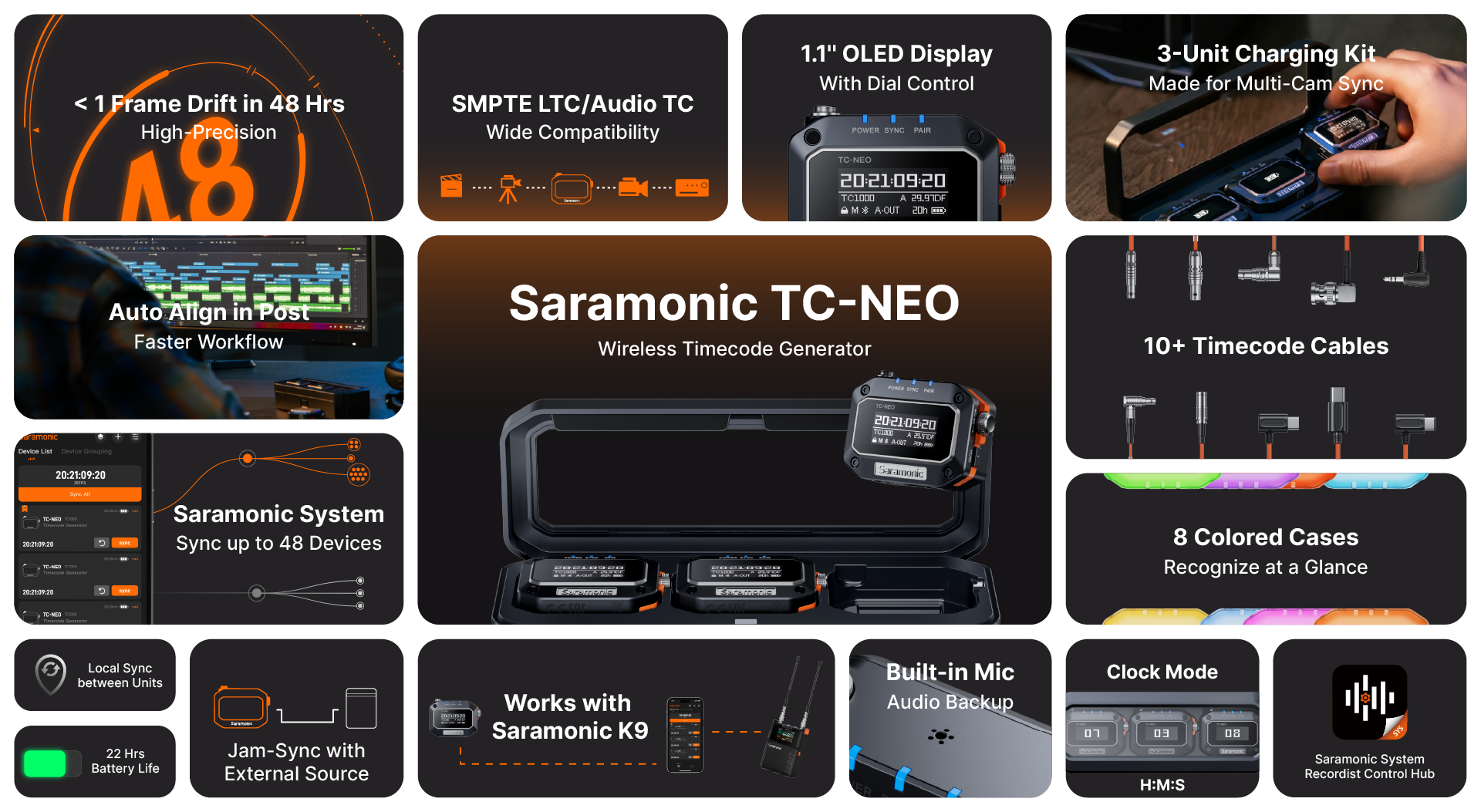
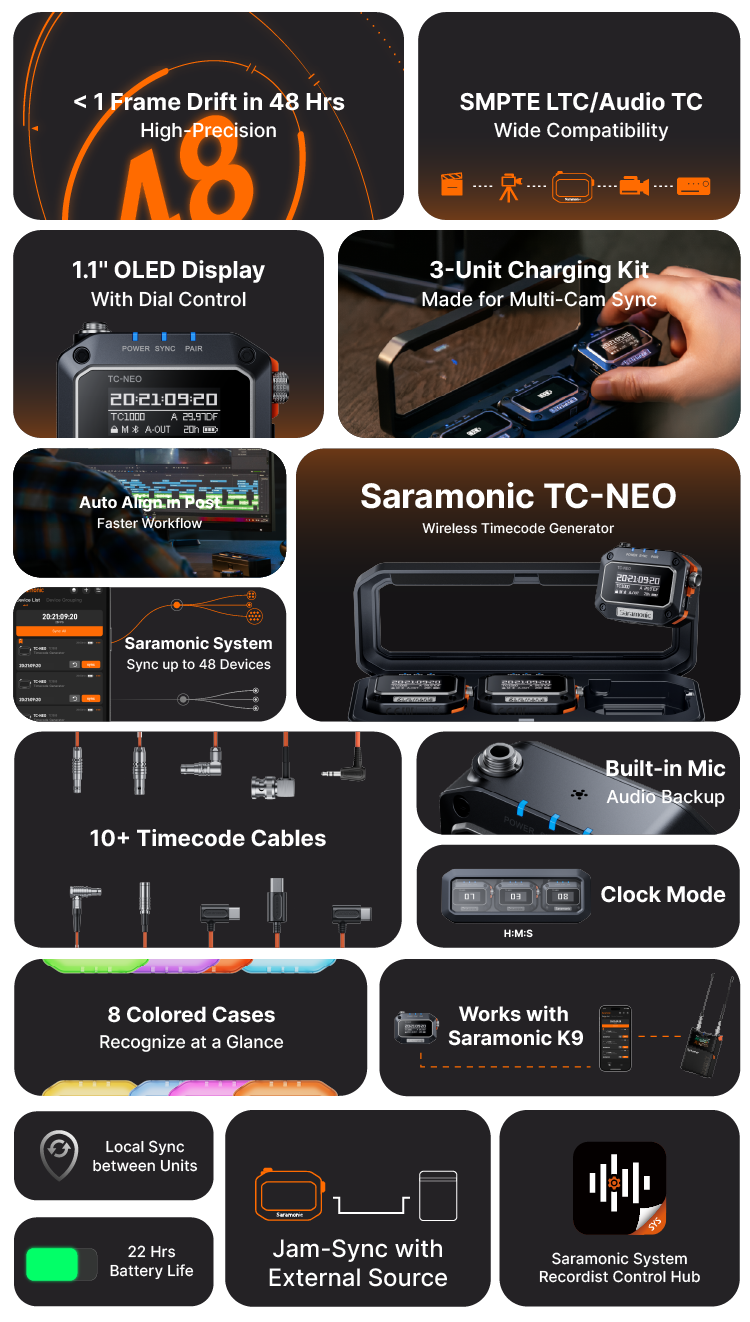
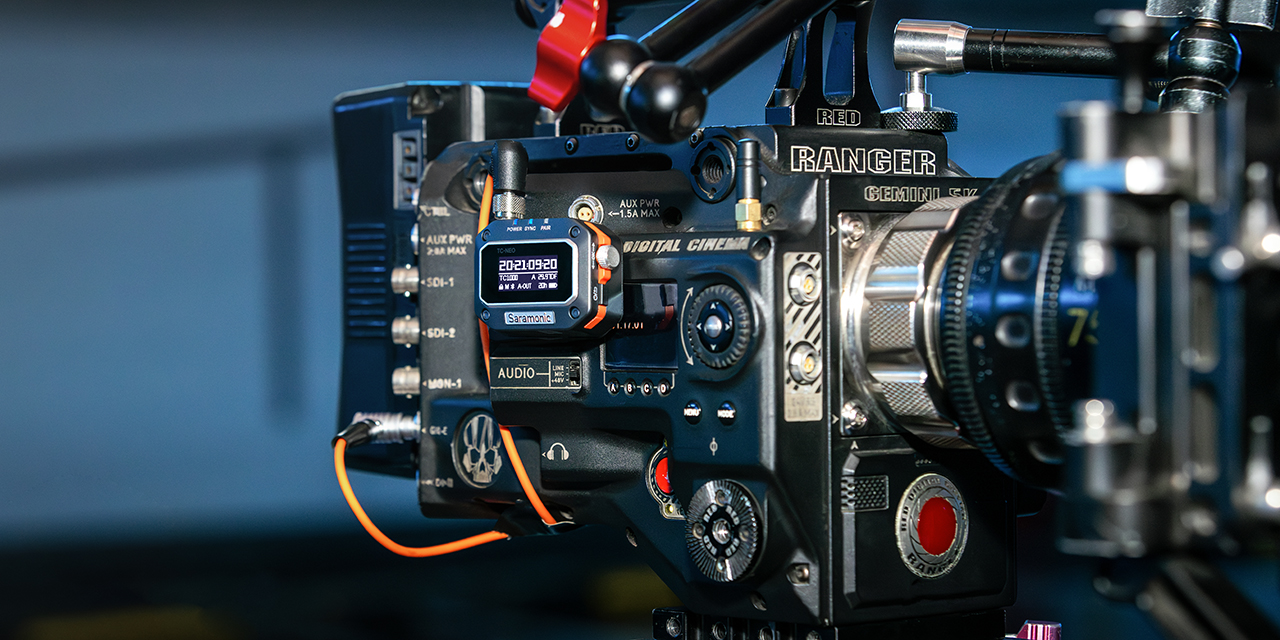

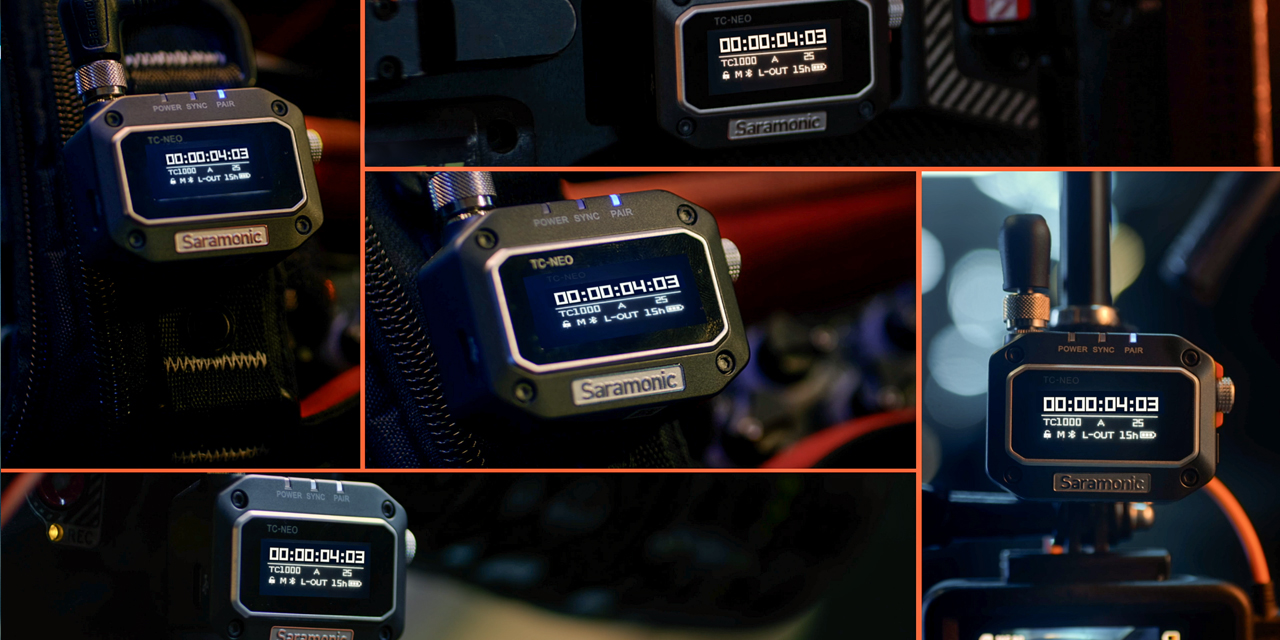
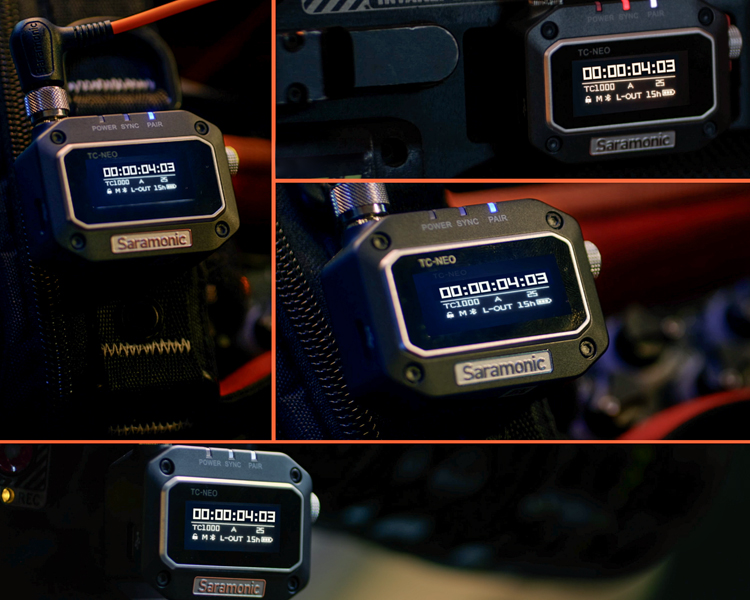
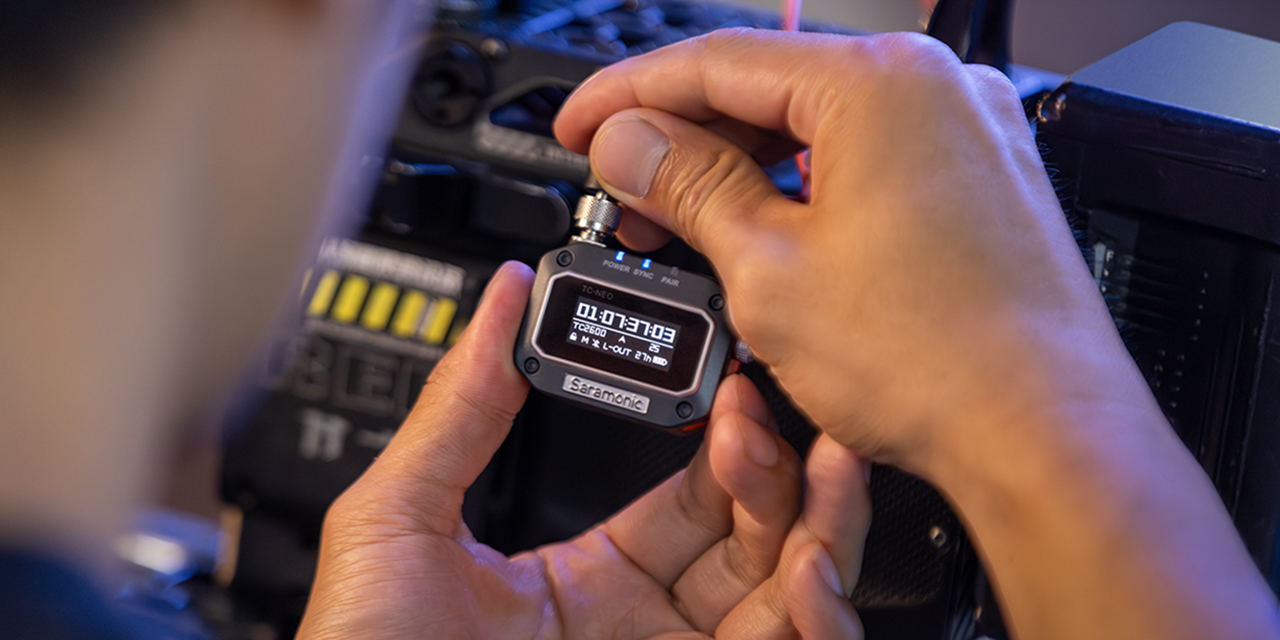
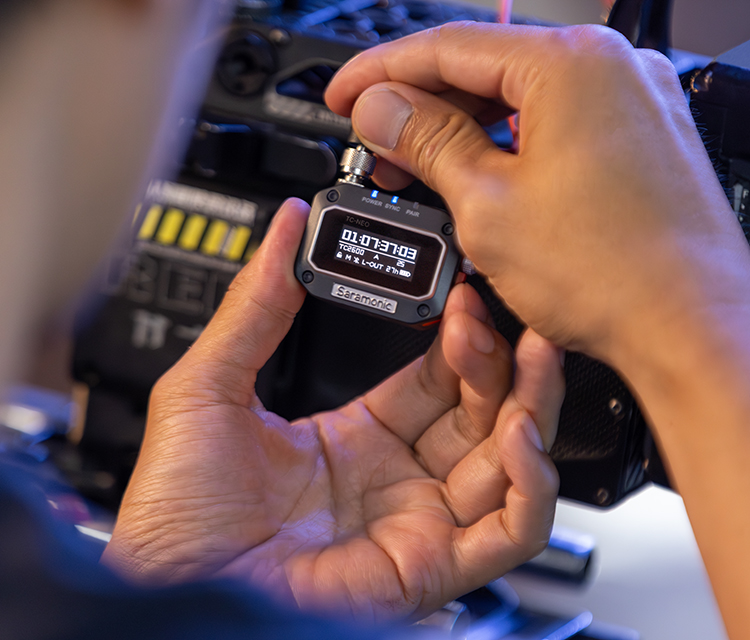
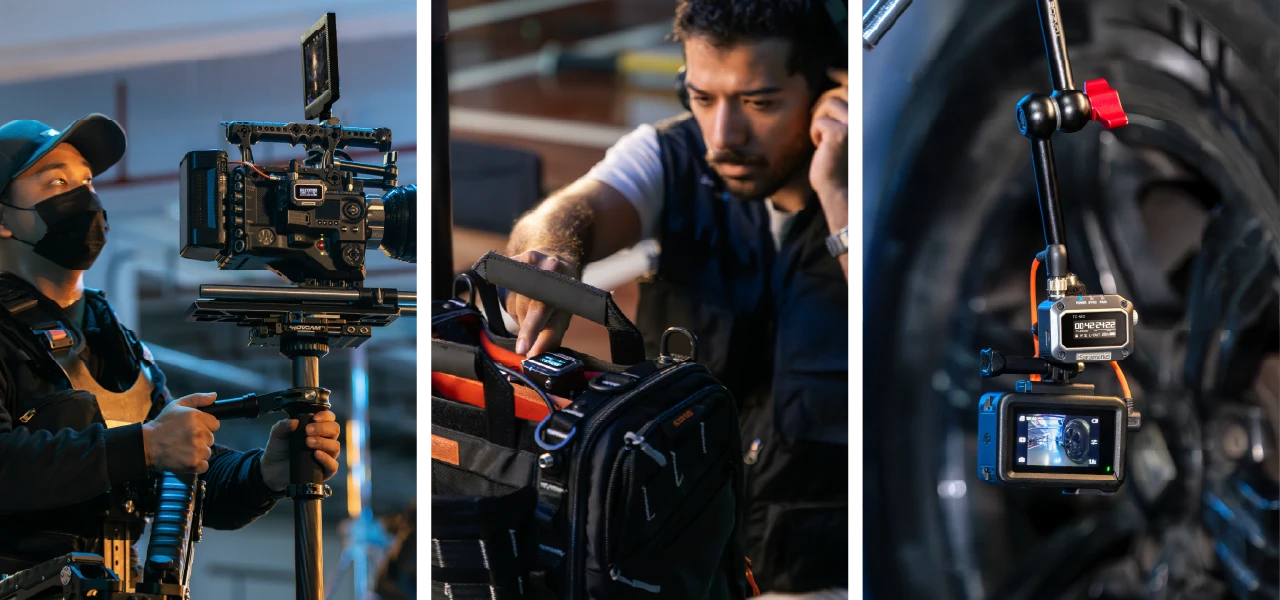
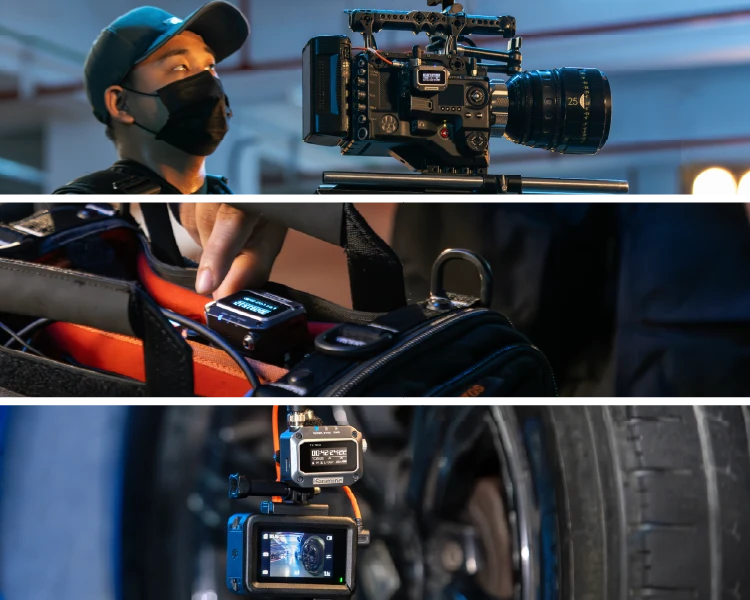
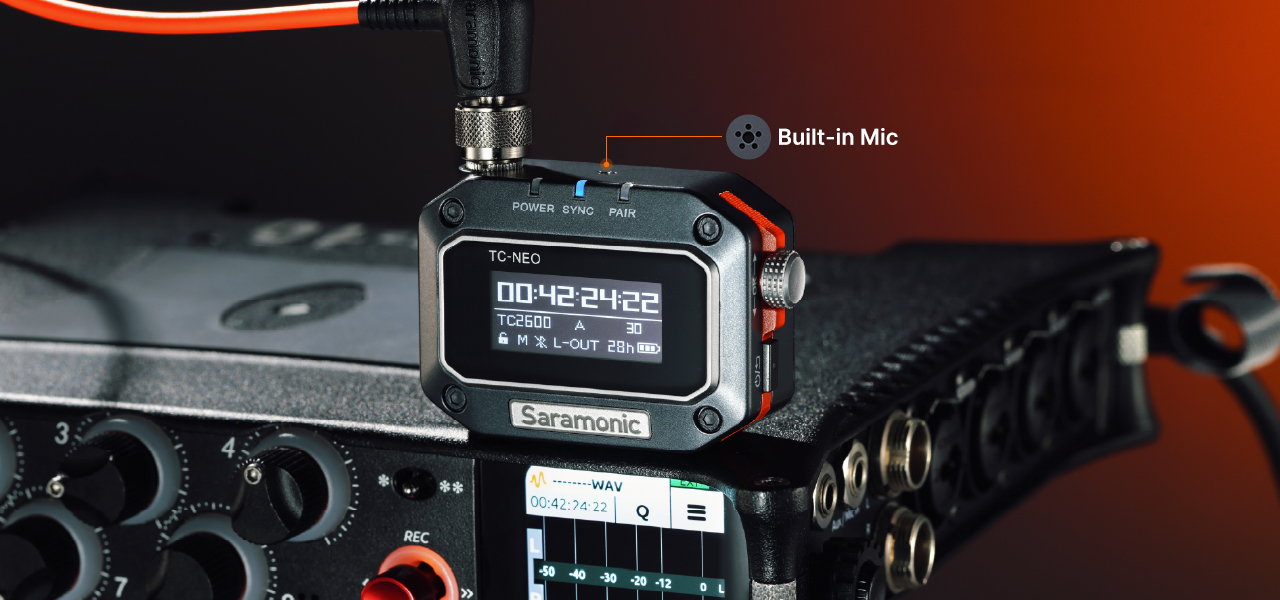
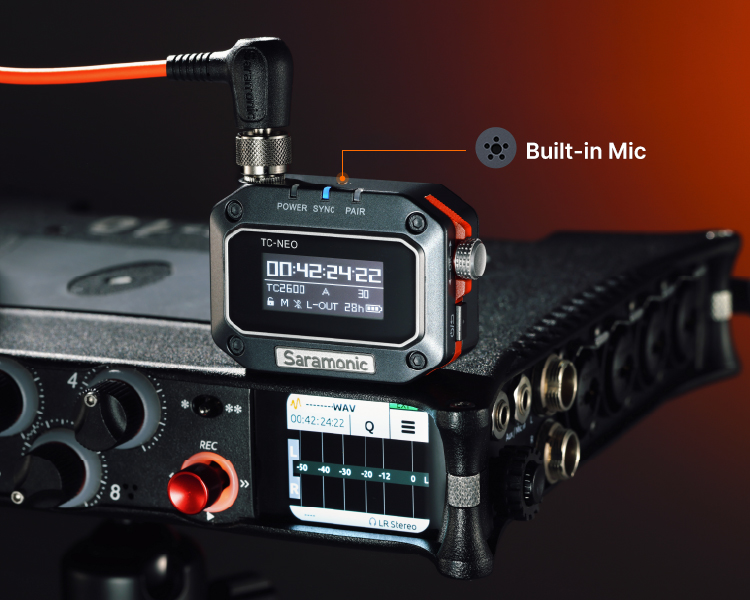
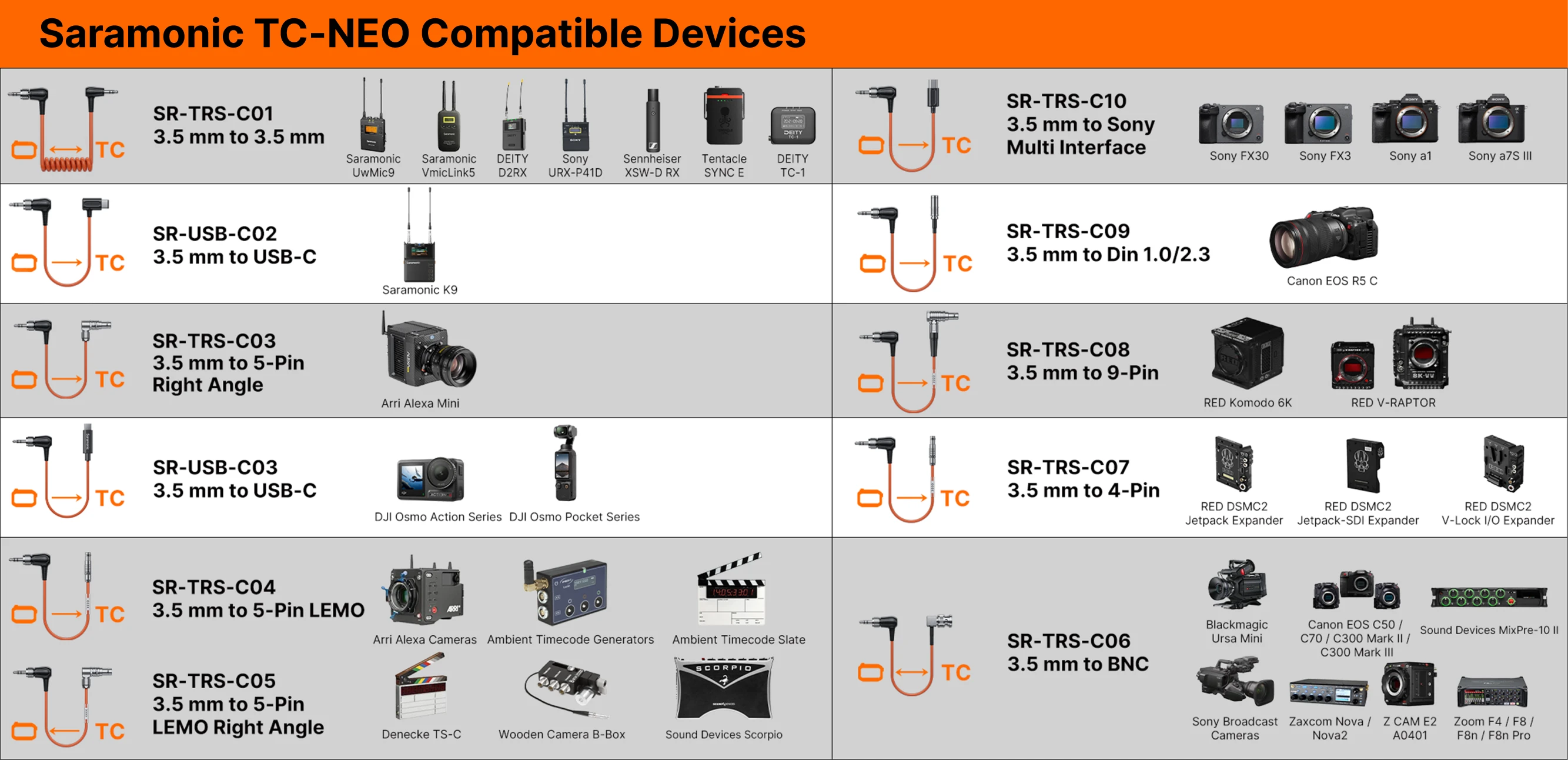
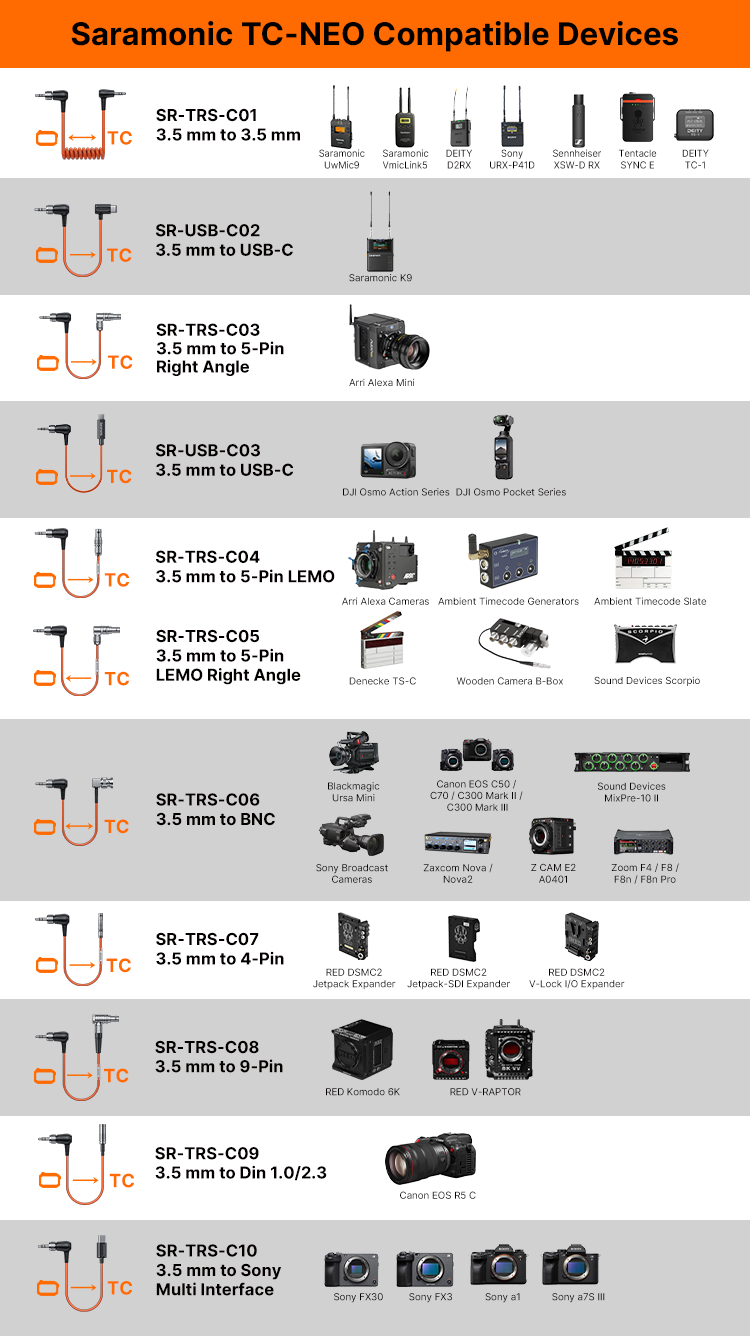
| Timecode Standard | SMPTE-12M, highly compatible, supports Linear TC and Audio TC timecode output | ||
| Accuracy | Less than 1 frame out in 48 hours (-30°C to +85°C) | ||
| High TCXO Precision | 0.5 ppm | ||
| Sync Methods | Saramonic System App (Bluetooth) / Local (2.4 GHz) / Wired | ||
| Timecode Input / Output | 3.5 mm Port | ||
| Display Type | 1.1" OLED | ||
| Battery Type | Built-in Lithium Polymer Battery | ||
| Battery Life | 22 h | ||
| Battery Capacity | 1150 mAh | ||
| Charging Time | TC-NEO 2h TC-NEO Kit 5h |
||
| Power Supply | USB-C | ||
| Polar Pattern for in-built microphone | Omnidirectional | ||
| TC-NEO Net Weight | 42.5 g | ||
| TC-NEO Dimensions | 49 x 37 x 19 mm (L x W x H) | ||
| Operating Temperature | -20°C to 55°C |
| Battery Type | Built-in Li-ion Battery | ||
| Battery Capacity | 6000 mAh | ||
| Power Supply | USB-C Port | ||
| Charging Time | 5 hours (5 V 2 A) | ||
| Charging Cycles | More than 1.4 times (3*TC-NEO) | ||
| Weight | 265 g | ||
| Dimensions | 182.7 x 65 x 41.5 mm (L x W x H) | ||
| Operating Temperature | 0°C to 50°C | ||
| Storage Temperature | -20°C to 50°C |
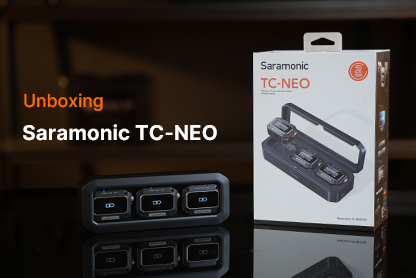
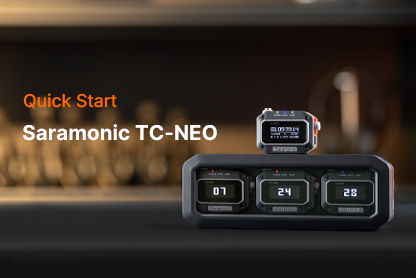
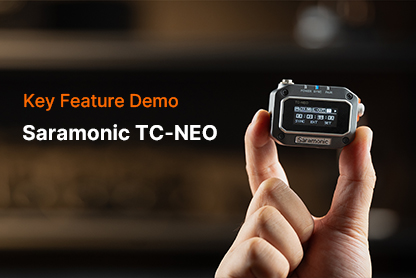
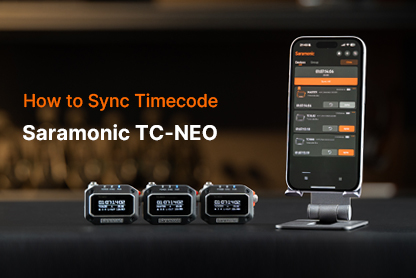
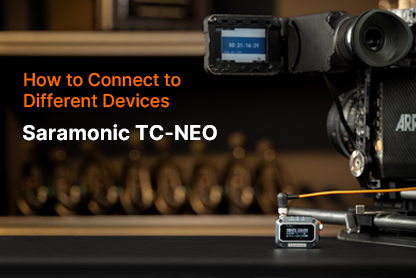
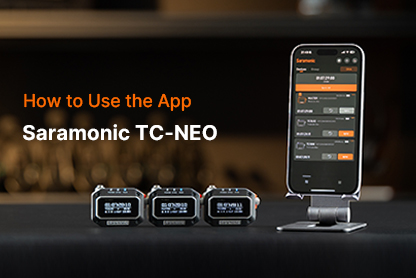
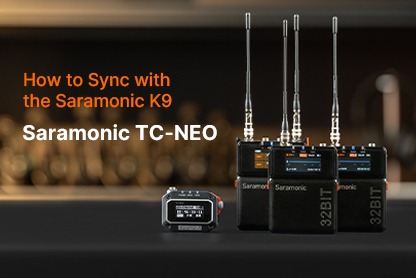
“Frame drift” refers to a 1-frame mismatch between the timecode and video. For example, the camera may be on frame 2000, while the audio timecode shows frame 1999.
This is caused by the precision of the internal crystal oscillator, which acts as the device’s “electronic clock.” A low-precision oscillator can lead to the timecode gradually speeding up or slowing down during recording, resulting in drift.
The Saramonic TC-NEO uses a high-precision oscillator to ensure frame-accurate sync over long recordings—crucial for saving time in post-production.
TC-NEO supports a wide range of industry-standard frame rates:
Traditional: 23.98, 24, 25, 29.97, 29.97DF, 30, 50, 60
High frame rates: 47.95, 48, 59.94, 59.94DF
SMPTE (Society of Motion Picture and Television Engineers) is the global standard for timecode, ensuring compatibility across all professional video/audio equipment.
Saramonic TC-NEO fully supports SMPTE-compliant timecode, making it compatible with most cameras (Sony, ARRI, RED) and editing software like Premiere Pro, DaVinci Resolve, and Final Cut Pro.
LTC is a widely-used timecode format transmitted as an analog audio signal, defined by SMPTE.
LTC can be sent via 3.5mm TRS, XLR, or BNC connectors. Compatible devices—such as professional cameras, audio recorders, or timecode boxes (e.g., TC-NEO, Tentacle Sync E)—support LTC In/Out.
Even if your device lacks a timecode port, you can record LTC into an audio track for later syncing in post-production (i.e., Audio TC).
Audio Timecode allows timecode to be embedded as an audio signal, typically on the left channel, for devices without dedicated timecode inputs (like GoPro, smartphones, or lightweight cameras). After recording, software like Tentacle Sync or PluralEyes can read the audio track and sync it accurately. This method enables timecode syncing without modifying the device or worrying about port compatibility.
Records a sync or reference audio track for post-production.
Separate from the timecode signal; when both are recorded, timecode is written to one channel (e.g., left), while reference or ambient audio is recorded to the other channel.
The master timecode acts as the reference source and is generated by a primary device (e.g., timecode generator, main camera, or DAW). Slave devices (e.g., secondary cameras, audio recorders) receive and sync to the master signal.
TC-NEO allows you to configure it as either a master or slave unit. It supports master mode, slave sync mode, and slave-lock mode after sync. Custom start timecodes can also be set to match various production needs.
Yes, TC-NEO supports standard Jam Sync via the 3.5mm TRS (Line In/Out) or optional USB-C timecode cables.
Saramonic offers over 10 optional sync cables, including USB-C, TRS, LEMO 5-pin, BNC, 4-pin, 9-pin, DIN 1.0/2.3, Sony Multi-Port, and more. Please refer to the full Timecode Cable Compatibility Chart for details.
Up to 48 TC-NEO units can be simultaneously synced via the mobile app in a clear, unobstructed environment, with a tested control range of approximately 40 meters.
Yes. TC-NEO can serve as the master timecode source to sync multiple K9 transmitters or additional TC-NEO units via the app. The K9 receiver will automatically inherit the synced timecode.
Check the label on your cable to confirm whether it is the SR-USB-C03 timecode cable.
There is another cable with the same USB-C connector (SR-USB-C02) which is designed specifically for syncing with the K9 TX transmitter. It is not compatible with DJI action cameras.
Waveform sync can work, but it isn’t always reliable. If the slate is too soft or the ambient noise is too loud, waveforms can fail to match. That means manually syncing clips one by one in post, which is time-consuming and error-prone. Timecode gives you a precise sync signal that stays accurate, even when waveforms don’t. It’s faster, cleaner, and far more reliable for post.
Not recommended. A single jam at the start of the day can work for short shoots, but over time, especially in long, fragmented sessions, devices can drift out of sync. Switching to slo-mo and back makes it worse. To keep everything properly aligned, each camera or recorder should stay connected to its own timecode generator throughout the shoot.